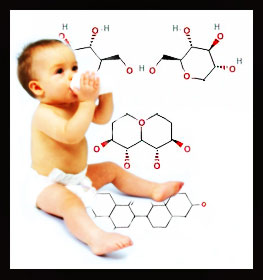Early Life Exposure to BPA Linked to Asthma Onset
 Children exposed to routine levels of the chemical bisphenol A (BPA) in the first seven years of life are more likely to have asthma, according to a new Columbia University Medical Center study.
Children exposed to routine levels of the chemical bisphenol A (BPA) in the first seven years of life are more likely to have asthma, according to a new Columbia University Medical Center study.
The children studied had roughly the same concentrations of BPA as the average for U.S. kids. “We saw increased risk of asthma at fairly routine, low doses of BPA,” said Dr. Kathleen Donohue, an instructor in clinical medicine at Columbia University Medical Center and lead author of the study.
The study, which tested 568 children and their mothers in New York City, is the first to link early childhood exposure to BPA with asthma. Studies with lab mice, however, have found a similar link.
Children with higher levels of BPA at ages 3, 5 and 7 had increased odds of developing the respiratory disease when they were between 5 and 12.
BPA is used to make polycarbonate plastics and is found in many canned foods and beverages, on paper receipts, and in dental sealants. As a result, more than 90 percent of Americans have traces of BPA in their bodies.
Medical experts for decades have been trying to figure out what has caused asthma rates to skyrocket in children throughout much of the world, beginning in the 1980s. Many suspect that it might have something to do with early-life exposures and changes in immune systems causing inflammation.
If one then adds this injury to increased levels of smog, VOCs, or particulate matter that can set such inflammation off, it's not hard to imagine a conspiracy of chemicals causing a new rise in an old ailment.
One out of every 10 U.S. children has been diagnosed with asthma, and the rate is one out of every six for black children, according to 2011 data from the Centers For Disease Control and Prevention.
Because it’s the first study of its kind, it’s too early to blame BPA for asthma, Harley said. But the chemical is increasingly linked to more and more children’s health problems.
“This is another study showing an association between health outcomes and early life exposure with BPA,” she said. “Several studies look at children’s behavior, development, thyroid hormones, now an association with asthma. There’s really starting to be accumulation of evidence.”
The study, which tested 568 children and their mothers in New York City, is the first to link early childhood exposure to bisphenol A (BPA) with asthma. Studies with lab mice, however, have found a similar link.

|
| JasonUnbound/flickr |
| One out of every ten U.S. children has been diagnosed with asthma. |
A Columbia University research team reported that children with higher levels of BPA at ages 3, 5 and 7 had increased odds of developing the respiratory disease when they were between 5 and 12.
– See more at: http://www.environmentalhealthnews.org/ehs/news/2013/asthma-and-bpa#sthash.zFBBJBLc.dpuf
